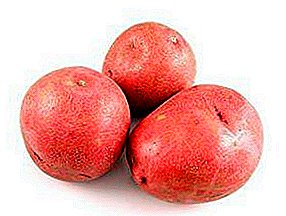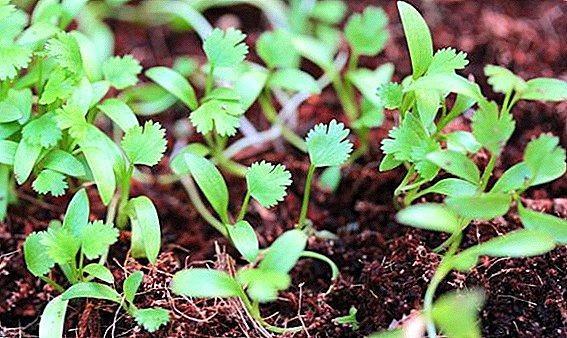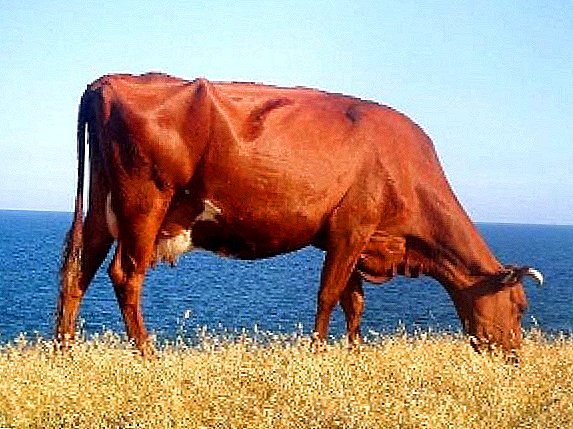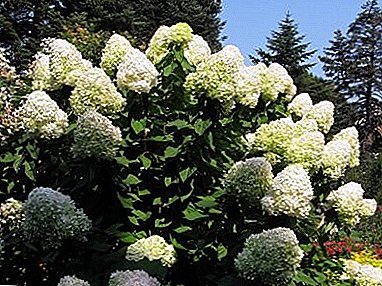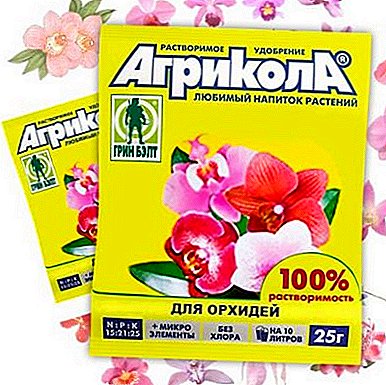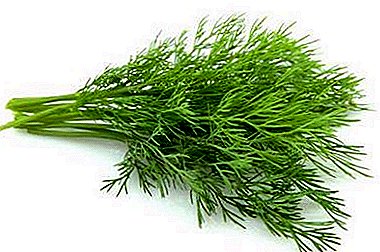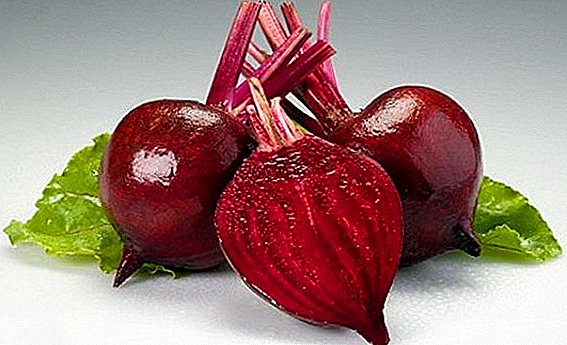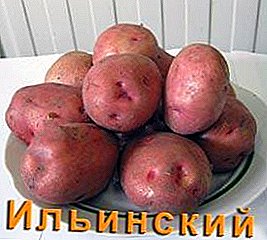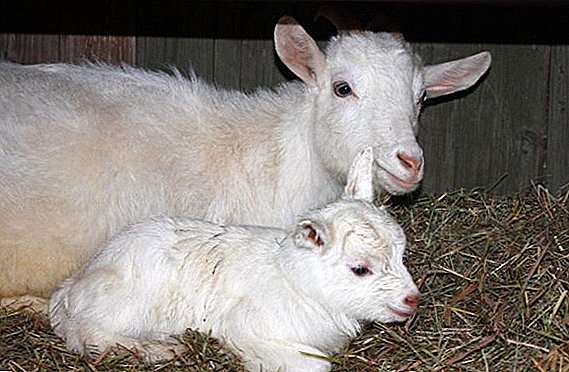 Breeding goats can significantly enrich your farm with valuable products: milk, meat, wool and leather. In order for the livestock to grow strong and healthy, farmers need to be aware of the signs of pregnancy and livestock. About how goats are called in a goat, how to determine that your animal will soon lamb, how to learn about possible pathologies in childbirth and other intricacies of breeding these animals you will learn from this article.
Breeding goats can significantly enrich your farm with valuable products: milk, meat, wool and leather. In order for the livestock to grow strong and healthy, farmers need to be aware of the signs of pregnancy and livestock. About how goats are called in a goat, how to determine that your animal will soon lamb, how to learn about possible pathologies in childbirth and other intricacies of breeding these animals you will learn from this article.
Signs of labor in a goat
Goat childbirth correctly called lambing. In order not to miss the beginning of lambing in a goat, carefully watch the first sign of the upcoming delivery in an animal. Initially, the goat swells udder. As soon as you notice this, animals need to be constantly monitored.
At the root of the tail of the animal you will notice dimples, symmetrically located on the sides. They indicate the divergence of the pelvic bones. This happens so that the animal can safely give birth to the baby.

The behavior of the mother before childbirth can also be a sign that the goat is ready for the appearance of offspring. She will sniff the straw bedding, correct it, preparing for the goat. Turn around, lie down and stand up in anticipation.
To goat feels calmer, you need to create silence in the room. The most correct will be to leave a goat for independent childbirth. However, if the goat is primipara or is very nervous when the owner leaves, it is better to stay in the barn. At the same time you can communicate with animals in a calm and confident voice.
Did you know? The goat's pupil has an unusual shape of a horizontal rectangle, which makes it possible to see them around 340 ° without turning its head.
Timing time
The total gestation period for a goat ranges from 150 to 155 days. After mating with a male, it is necessary to keep the goat's health under control. If you know exactly the day of pairing, then you need to count 147 days. Approximately on this day, the animal must have a birth.
If the day of mating is not marked, you can calculate the terms of labor independently. The animal disappears hunting (swelling of the genitals, changing their color and special whitish discharge). The behavior of the female changes, she becomes calmer, lies a lot and eats. Also, by the second month of pregnancy, you will be able to notice a bulge on the stomach, on the right. When probing at a later date, you can feel the movement of the fetus. When you first notice this, count down 2 months. In a specified time, the goat should begin labor.

How to take birth?
The birth of a goat occurs in several stages.
To help the animal, the owner must know the steps of this procedure:
- The first comes mucus plug. The cork comes out in parts, and the goat will approach each piece that has come out, sniff and lick it. In the absence of problems at this stage, it will be fully released in 10-30 minutes.
- The next step is the amniotic fluid and amniotic fluid. Bubble need to pierce. Under the goat put capacity in order to collect amniotic fluid. Subsequently, the animal will drink them. This is necessary to restore the energy of the female, so that with stronger bouts she had the strength to give birth. At this stage, you can see the legs of a goat.
- Next, will begin frequent labor pains. You will see the front legs and baby face. The head should be firmly moved to the front limbs.
- If the baby’s head first appears, it means the goat's front legs are located under the belly. If the female does not cope during contractions, you must gently push the kid back, and then hold your chin with your fingers to pull out the legs. All actions must be carried out with the utmost care. Such a procedure can only be done in a break between contractions.
- During labor, there are usually two struggles to complete the labor. The signal for completion is the fully released goat's head.
Video: Okoth goat and care for goat and kids
Goat lambed: what to do next?
As soon as the goat has lambed, it is necessary to process the kids. They need full care, feeding and keeping warm. At the same time, it is necessary to pay attention to the health of the mother: follow the diet, properly milk it and care for the animals.
Treatment and further care for kids
The first thing to do is to clear the mucus of the baby’s mouth and nose so that they do not get into the respiratory system and cause inflammation. Then process the body, remove residual amniotic fluid and blood. To do this, use a clean, soft straw, and then a towel.
Read about the best breeds of goats.
Do not leave a newborn goat with wet skin, since the newborn has not yet formed thermoregulation. It can be supercooled at a temperature of + 15 ° C, which can lead to the death of the goat. Therefore, in the first days of the baby's life, it is necessary to wrap up in a warm blanket or other materials and bring it into the house. In the house it is necessary to wipe it well to warm it. Rubbing not only warms, but also improves the blood circulation and breathing of the baby, and also enhances intestinal motility, which makes it possible for the original feces, that is, meconium, which has a black color, to come out faster.
Newly born kids should in no case be washed with water, as they can overcool, as a result of which respiratory illnesses can develop and death is ultimately expected.  After grinding and drying of the goat, it is necessary to proceed to the processing of the umbilical cord. It must be cut with disinfected scissors at a distance of 2 cm from the abdomen. For disinfection, soap is used with which the scissors are washed, then wiped and treated with alcohol. If the umbilical cord needs to be cut in several goats, then after each newborn the scissors blade is rubbed with alcohol.
After grinding and drying of the goat, it is necessary to proceed to the processing of the umbilical cord. It must be cut with disinfected scissors at a distance of 2 cm from the abdomen. For disinfection, soap is used with which the scissors are washed, then wiped and treated with alcohol. If the umbilical cord needs to be cut in several goats, then after each newborn the scissors blade is rubbed with alcohol.
After you cut the umbilical cord, run your finger over it, gently squeezing out the blood, then tie it with silk thread and blot with iodine. Within 14 days the umbilical cord will fall off. The length of the umbilical cord should not be large, since the animal moves, at this moment the umbilical cord is injured on the feed and the inflammatory process can begin.
The main thing to pay attention to is feeding the young. The time from when the baby was born to feeding should be 30 minutes, a maximum of an hour, because the animal is born with a weak immune system. The body is subjected to intoxication, due to a lack of blood immunoglobulin, which is in the colostrum. The faster you feed the kid, the more reliable it will be protected from diseases.
We advise you to read about the diet of kids and how to feed them.
Colostrum should be the first meal of a goat. Born with absolutely sterile stomachs, kids will get bacteria from the environment if they are not fed with colostrum first. And this is fraught with serious problems with the digestive tract when growing up. 
Colostrum allows babies to get exactly the beneficial bacteria that will be the basis of the digestive system. Due to the beneficial microflora, pathogens will not multiply in the kid's stomach. Colostrum is also very nutritious, it quickly nourishes the young body with essential substances and provides energy for growth and development.
Important! Female mastitis is a contraindication for colostrum feeding newborn goatlings. There are many harmful bacteria in it that are fatal to the kid. This milk is very thick, with sediment, which may be blood clots.
Requirements for the place where kids should be kept after birth:
- clean and spacious room;
- clean bedding of straw, it should not be signs of rot;
- humidity is unacceptable, as it contributes to the development of pathogenic bacteria;
- airing should be carried out regularly in the room.
Once the kids are a month old, they can be taken out for a walk in the fresh air, provided that the weather is warm enough. There, it is permissible for young animals to tweak fresh weed, this will diversify their digestion. 
It is very important for the maintenance of immunity to supplement the diet of kids with vitamins and nutritional supplements:
- fish oil (at least 5 g per day);
- fresh needles;
- food salt.
Important! Remember that at any age goats should get fresh, clean water in unlimited access.
Goat care
The birth process is a stressful process for an animal. At a goat, it lasts from one to three hours. During this time, the animal loses a lot of strength, which is very important to recover as soon as possible so that the animal can feed its kids.
First of all, the female must be drunk with water. The liquid must be clean and fresh, it is unacceptable to drink her stagnant water. Amniotic fluid is often given to the female to maintain strength, so in the process of childbirth you should not immediately pour it out.
After the birth of offspring, the female should not be fed hard. High-quality hay, cereals and legumes are suitable for feeding. You can add roots, mash of bran. Food supplements in the form of concentrates, haylage and silage should be given in small portions. 
The composition of the food ration goat goats:
- hay from raznotravya - 2.5-3 kg;
- oats, barley - 200 g;
- root vegetables (chopped) - 0.5-1 kg;
- wheat bran - 100 g
Most often, intravenous drugs are administered if the animal refuses to eat after delivery.
How much milk does a goat give after lambing?
Immediately after the appearance of the offspring of the goat gives small yields. To increase the amount of milk, the female is distributed, a special massage is given and a high-carb diet is introduced. These procedures trigger the goat's body, so it gives milk for 6-11 months, depending on the breed.
Did you know? The record for the number of milk yields belongs to the Zaanen goat. For the year it can give up to 3500 l.
Sectioning is carried out in two ways: manually and with the help of kids. On large farms it is preferable to make a hand. In the period of the first time after lambing, the goat produces 1.5 liters of milk. Before the first break, the udder must be washed with warm water and wiped dry with a soft cloth. Nipples smeared with special ointments, so that they do not appear cracks. It is necessary to conduct milking quickly so that the procedure brings as little stress to the goat as possible.
What to do with complications?
The generic process is a difficult, long period for the goat, during which the owner must be close by to notice the signs of complication and prevent them. Most often, an animal can give birth independently, but there are cases when lambing occurs with complications.
These include:
- improper location of the fetus;
- narrow pelvis;
- lack of labor.
Excessive weight leads to a violation of metabolism in the body of the female, which leads at the time of birth to a reduced labor activity, lack of contractions and attempts. Improper placement of the fetus or its large size also often causes problematic contractions.

In order to relieve the goat of the onset of labor and to stimulate it, the drug oxytocin or uteroton is administered. These substances enhance the work of the muscles so that the expectant mother gives birth faster. At a time, you can enter no more than 10 units of the drug. Amniotic fluid has a similar effect. They are collected in a separate container, first tearing up the amniotic bubble, flushing water and then soldering it to the goat.
For prolonged and painful contractions in a female, it is necessary to act manually. To do this, grab the baby's limbs with your hands, or with a simple loop of a rope. Then you need to wait for the attempts and gradually pull his legs, helping him to go out.
Actions should be carried out exclusively during the contraction, massaging the vagina, so that the animal can easily pass through the narrow pelvis. As a rule, for this, the mucous membranes are gently rubbed with a hand, petroleum jelly can be used as a lubricant. If you notice that the fetus is too large, it is necessary to resort to surgery. For this, an incision is made in the middle groove.
We recommend reading about diseases of goats and the features of their treatment.
With the help of palpation during childbirth, you can identify the wrong location of the fetus: wrapped head, tangling of the extremities, presentation of the stomach to the back. When complications should immediately contact the veterinarian.
Features of winter lambing
The birth of offspring in the winter period requires increased attention from the owner because of the temperature and the climatic conditions in which the animal is located.
The stall, in which the goat will give birth, must be clean, with fresh bedding, and also have enough space for mom and brood. The room should be quiet, it is desirable to isolate other animals from giving birth. Kids born during the winter period acclimatize faster to cold temperatures and grow hardened and resistant to diseases. In order for the animal not to get sick because of the cold, it is necessary to create heat in the room where they will be born, and also where the first month will be kept.
In addition, be sure to give the kids colostrum, as this will strengthen their immune system. 
Possible problems
Immediately after giving birth, the female is in a weakened state and her health requires care and attention from the host. There are several problems that may appear immediately after birth.
Next, consider the two most common problems:
- no afterbirth;
- eating the afterbirth by the female.
Read also how much milk a goat gives per day.
Last not coming out
An afterbirth leaves within 1-3 hours during childbirth. Consists of amniotic fluid and mucus mixed with blood.
There are several reasons why there is no afterbirth:
- excess weight;
- non-compliance with the diet;
- lack of activity, movement, free walks;
- there are several babies in the litter;
- close relationship with the male during the mating;
- infectious diseases.

Goat ate the last
When the last will come out it is not necessary to clean it, because the goat must decide for itself whether to eat it or not. It contains many minerals that may be needed by the female body. If she eats it, it means she needs additional nutrients, if not, then it can be removed.
Childbirth is a complex process that requires special knowledge. Knowing the possible difficulties during pregnancy, you can prevent them, as well as help the female to give birth to painlessly healthy offspring.



